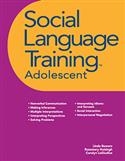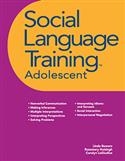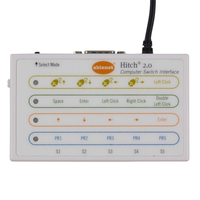SOCIAL LANGUAGE ADOLESCENT

Description
Ages:12-18
Grades:7-Adult
Help your teens with language impairment (LI), Asperger's Syndrome, and high-functioning autism learn to make and sustain friendships. This program applies the research on all aspects of social language: verbal, nonverbal, paralinguistic, and metalinguistics.
The teaching draws on teens' personal experiences to help them understand social contexts and social behavior. Step-by-step instruction with loads of picture support and personal application develops specific skills in perspective-taking, making inferences, interpersonal negotiation, expressing empathy, and more. The book is a treatment companion to theSocial Language Development Test Adolescent.
The units and skills addressed are:
- Nonverbal Communication- Identify and interpret facial expressions, gestures, posture, proximity, and wordless vocalizations (hmm, ah-ha, duh, etc.) in isolation and then together.
- Making Inferences- Learn to pay attention to relevant details; ignore irrelevant ones; and use context, body language, and other clues to make reasonable inferences about what is happening and why.
- Multiple Interpretations- Think of more than one logical interpretation for a situation. Develop flexibility in thinking and consider the logical possibilities.
- Interpreting Perspectives- Understand the key factors in evaluating others' perspectives. Recognize that people in the same situation can think different thoughts and have different opinions.
- Solving Problems- Recognize the feelings of other people as a priority when solving social problems by thinking of solutions that preserve and/or create friendships.
- Interpreting Idioms and Sarcasm- Learn to recognize the paralinguistic features of conversations that are replete with innuendo, sarcasm, and metaphors in order to react appropriately in social situations.
- Social Interaction- Adolescents learn to pay attention to body language, facial expressions, vocal intonation, and the expressive language of their peers, acquaintances, family members, strangers, and authority figures. They'll learn to recognize appropriate and inappropriate reactions to these people and what to say and do
- Interpersonal Negotiation- Learn to compromise, acquiesce, problem solve, listen, seek mutual resolutions, and negotiate.
To see more of this product's contents:
184 pages • 8.5 x 11, softcover • ©2010
SOCIAL LANGUAGE ADOLESCENT






